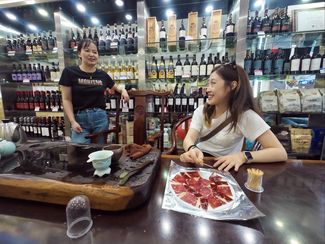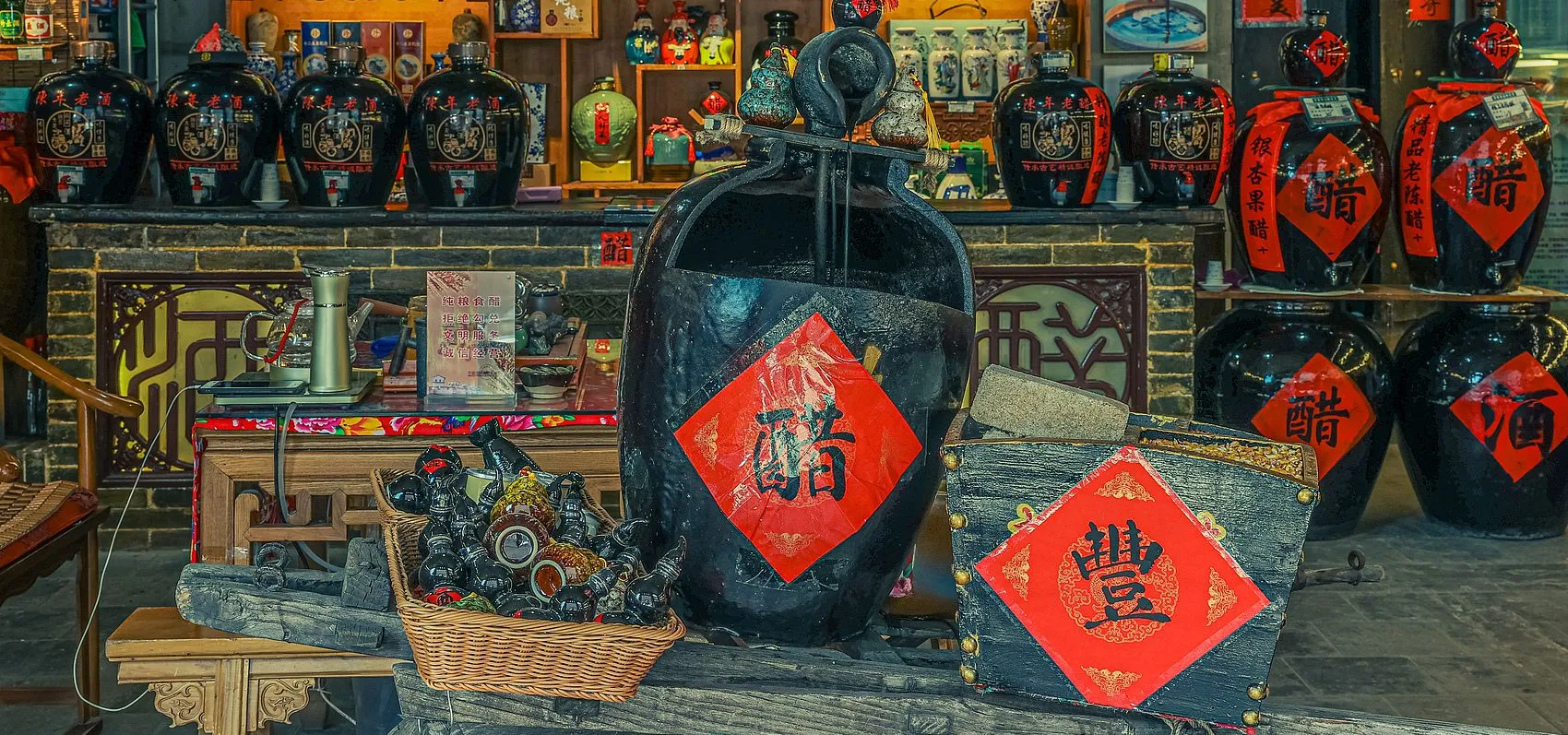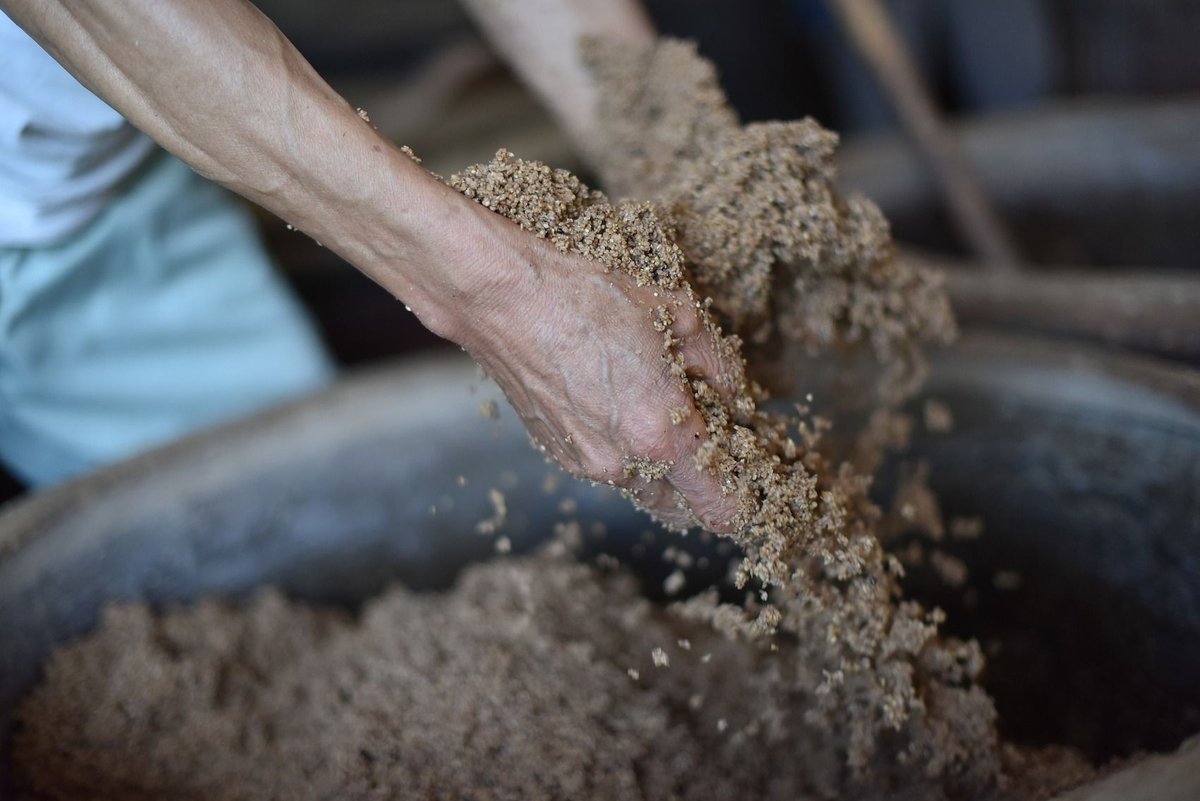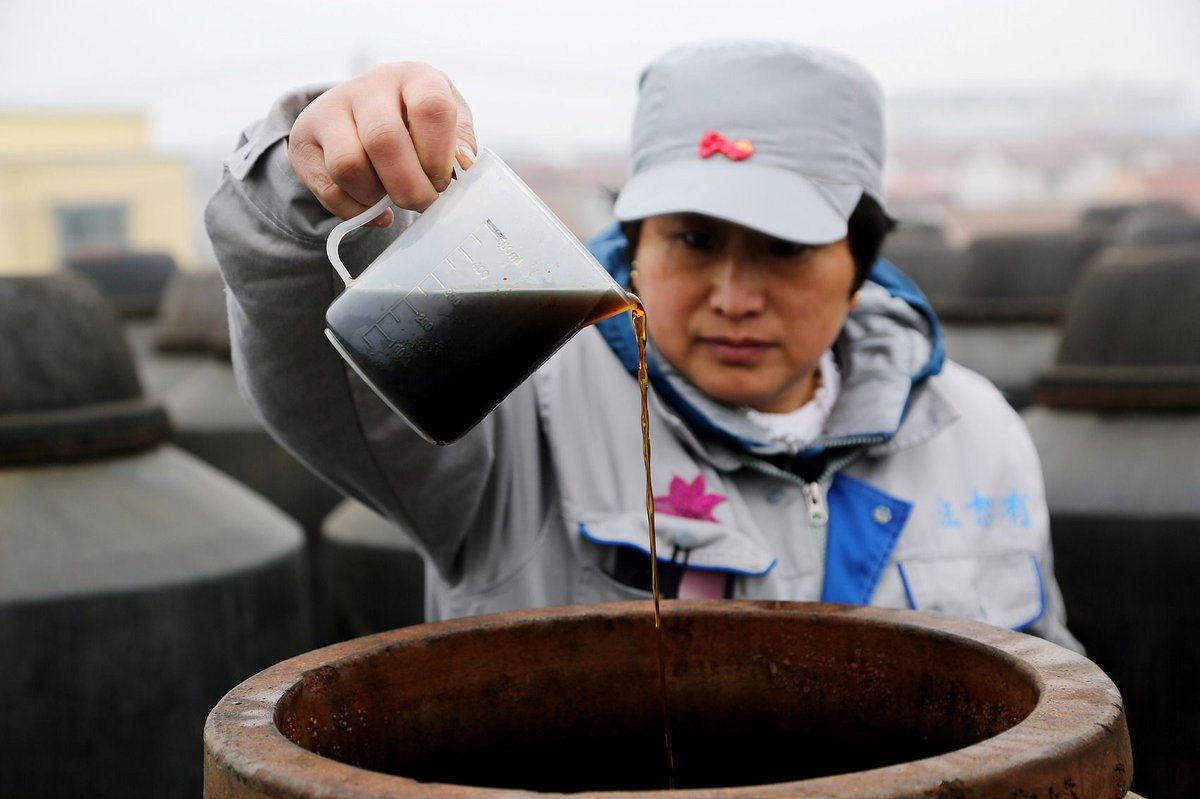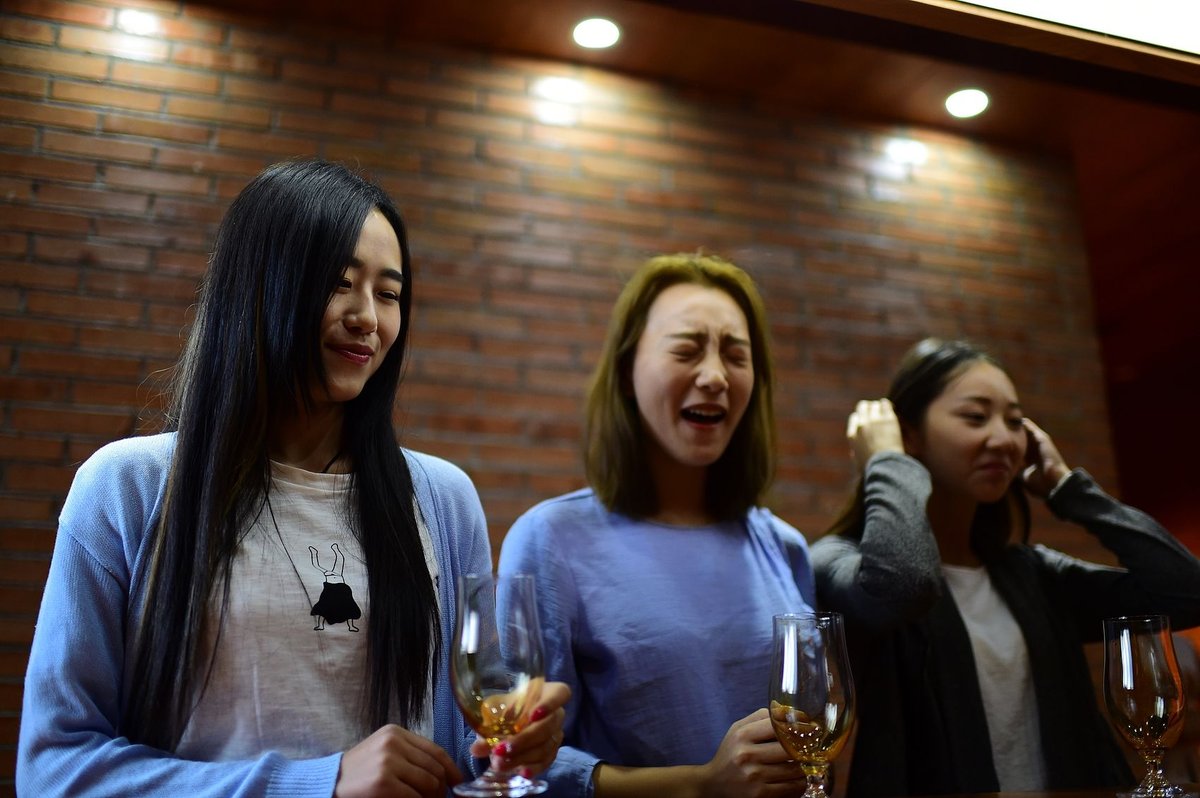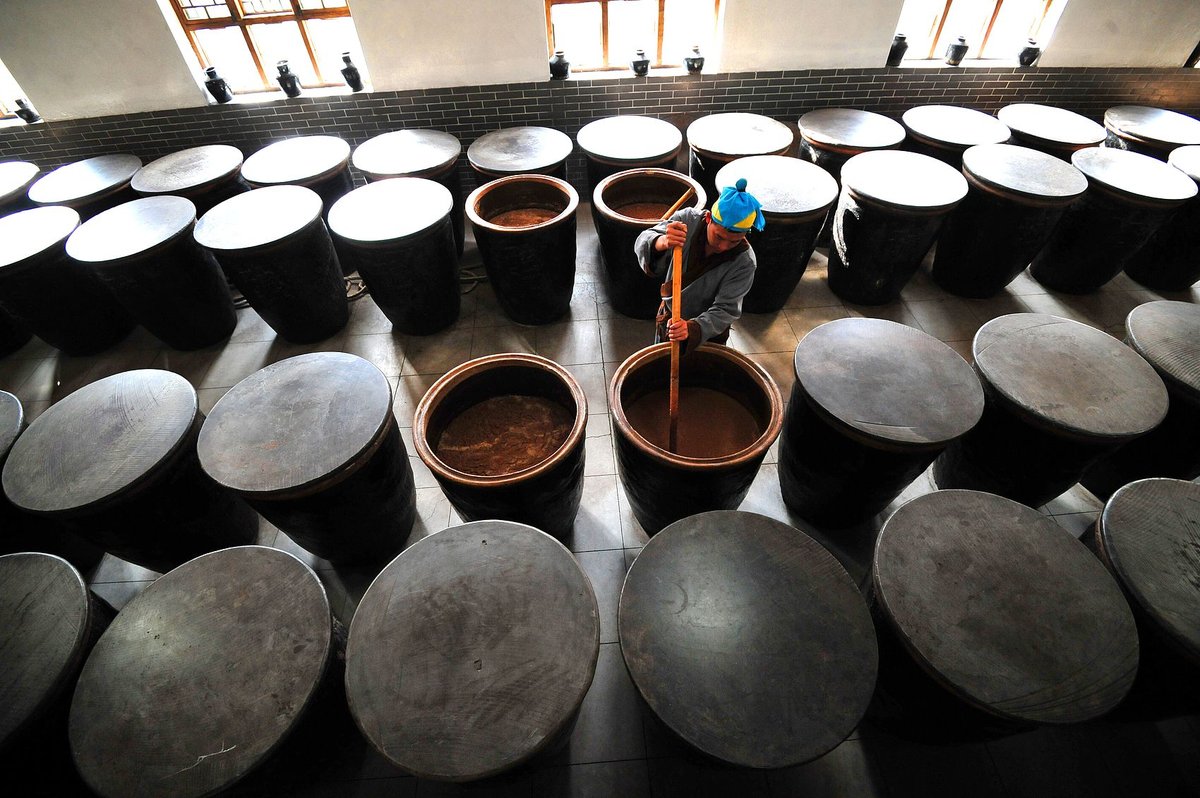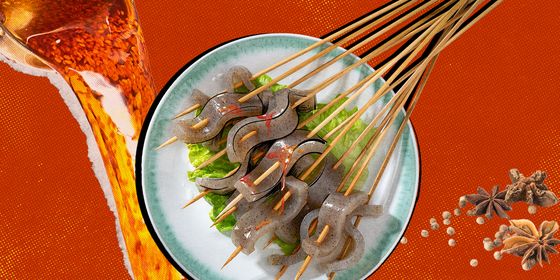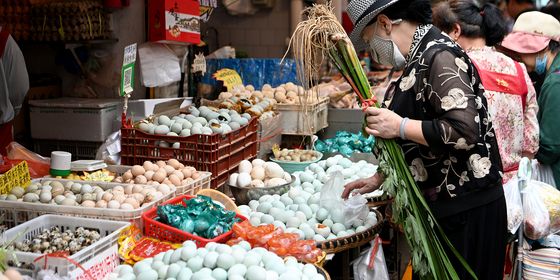Though not as omnipresent as soy sauce, vinegar has long been cherished in China, and now a new generation is discovering its tangy appeal
“Several Shanxi natives enter a Beijing restaurant. Just after being seated and before ordering, they reach for the bottle of vinegar on the table and each consumes three spoonfuls, only to astonish neighboring diners.” This idiosyncratic scene may sound like a joke without a punchline, but it actually comes from renowned 20th-century food writer Wang Zengqi’s (汪曾祺) essay “The Five Flavors.” Far from literary exaggeration, it captures the authentic culinary habits of people from Shanxi province, where vinegar has transcended its role as a mere condiment to become a culinary cornerstone that flows through locals’ veins.
Indeed, an official survey conducted in 1978 across five northern Chinese cities revealed a striking statistic: the average resident of Taiyuan, Shanxi’s capital, consumed approximately 9 liters of vinegar annually, nearly double that of those in Inner Mongolia’s Hohhot, the runner-up. In 2024, when cultural tourism bureaus nationwide intensified efforts to promote their local attractions via social media, Taiyuan’s tourism bureau director took an unusual approach: he raised a bowl of vinegar on camera and declared, “Today I invite you all to drink vinegar with me!” before downing it in one go. The video went viral, receiving over 10 million views and introducing Shanxi’s distinctive vinegar culture to audiences all over the country.
Read more about China’s regional flavors:
- Hot and Spicy: How Malatang Conquered China
- Where Red Pepper Meets Rosé: Yunnan and Guizhou Flavors Fuel China’s Bistro Craze
- Love, XO
“In Shanxi, adding vinegar to noodles is standard practice, and drinking vinegar before meals might be a local custom in some areas,” says Da He, TWOC graphic designer and Shanxi native. “When I was a child, my mom would mix vinegar with sugar water, chill it, and serve it as a summer drink.”
“Personally, I find even plain white rice with Shanxi vinegar delicious—no side dishes necessary. But it’s got to be Shanxi vinegar,” Da He adds.
Situated along the middle reaches of the Yellow River in the eastern Loess Plateau, Shanxi’s semi-arid climate and alkaline soil make it ideal for cultivating hardy crops like sorghum and millet, which in turn support vinegar production. Unlike fruit-derived vinegars popular in the West, China’s traditional varieties have primarily been produced from such grains. Shanxi’s aged vinegar, for instance, is brewed from sorghum, while Jiangsu province’s Zhenjiang aromatic vinegar uses glutinous rice.
“Shanxi vinegar is like fine wine—the longer it ages, the richer its flavor becomes,” Da He says. “It has a deep, soy sauce-like color and a complex fermented acidity that stimulates the appetite. Its taste is multilayered; unlike most other vinegars that seem like mere sour flavorings—pale in color and just one-dimensionally tart.” Da admits his vinegar standards are uncompromising: it must be Shanxi-made. Even though he lives in Beijing, he only buys Shanxi vinegar and refuses to use varieties served in restaurants or delivered with meals because, in his words, that vinegar is “not like vinegar at all.”
Ancient fermentations
Chinese vinegar has a long history dating back to at least the Zhou dynasty (1046 – 256 BCE). Back then, it was so important that the classic text Rites of Zhou (《周礼》) describes how the Zhou court appointed a specialized official, known as the “xiren (醯人)”—xi being the ancient term for vinegar—to oversee vinegar supplies. Foods preserved in vinegar held ceremonial importance and were served at state sacrifices, court banquets, and important feasts—marking it as a cultural emblem outside of its role for mere sustenance. To this day, Shanxi natives are affectionately nicknamed “lao xi’er (老醯儿).”
The exact origins of vinegar are not found in historical texts, but many a folklore has been told about its possible invention. One legend credits Hei Ta (黑塔), son of the mythical winemaker Du Kang (杜康), with discovering it accidentally while learning to ferment wine. After over-fermenting a batch for 21 days, he found that it had turned pleasantly sour and fragrant. Myth has it that he named the resulting liquid after the time he opened it: “cu (醋),” combining the characters for “21 [days] (廿一)” and “酉,” a reference to the 10th of 12 two-hour periods that make up China’s traditional timekeeping system.
Another tale involves King Zhou of the Shang dynasty (1600 – 1046 BCE), who sought a medicinal wine made from sorghum and spring water for his ailing concubine, Daji. Officials from Jinyang (present-day Taiyuan) hoped to appease his search with their own sorghum concoction tribute, but it spoiled during the long journey to the capital, in present-day Henan. Expecting punishment, the desperate brewers tasted the drink, only to discover it was in fact delicious. Upon presentation to the emperor, the brew unexpectedly won his delight, and when Daji asked its name, an attending official blurted out “稀 (xī),” or rare, which the court scribe formally recorded as “醯.”
While these folk tales may lack historical credibility, they highlight the crucial fermentation process that underpins vinegar-making: leaving alcohol to undergo a second fermentation, known as acetic acid fermentation. By the Han dynasty (206 BCE – 220 CE), vinegar production techniques had already reached considerable sophistication. The Eastern-Han agricultural collection Monthly Instructions for Four Classes of People (《四民月令》) even specifies the ideal time to make it: “The fourth day of the fourth month for fermented sauces, the fifth day of the fifth month for vinegar.”
During the Southern and Northern dynasties (420 – 589), vinegar craftsmanship reached new heights, with the agrarian encyclopedia Essential Techniques for the Common People (《齐民要术》) of the time documenting over 20 vinegar-making techniques. One method, known as the “glutinous millet vinegar process,” instructs: “Collect the clear liquid in August, store it in separate jars sealed with mud-covered lids—it can be preserved for years.” This ancient method is nearly identical to today’s traditional vinegar-producing technique in Qingxu, Shanxi.
During the Tang (618 – 907) and Song (960 – 1279) dynasties, vinegar had become an indispensable condiment. The Southern Song memoir A Record of the Millet Dream (《梦梁录》) was the originator of the famous line: “The daily necessities no family can do without are firewood, rice, oil, salt, sauce, vinegar, and tea.” These items later became shorthand for the mundane aspects of daily life.
It was also during this period that vinegar became deeply embedded in everyday language. Many vinegar-related expressions that we use today to describe jealousy are related to vinegar, such as “eating vinegar (吃醋),” “a vinegar-fueled temper (醋劲儿),” and “to knock over the vinegar jar (打翻了醋坛子).” In fact, these all originate from a Tang-dynasty story noted in Anecdotes of the Sui and Tang Dynasties (《隋唐嘉话》). The story describes how esteemed chancellor Fang Xuanling (房玄龄), renowned for his hard work but often browbeaten at home by his wife, was once offered two beautiful concubines by Emperor Taizong as a reward for his service. Unsurprisingly, his wife vehemently objected to the gift. So the emperor, determined to do right by his loyal servant, presented her with an ultimatum—either drink a cup of poison or accept the concubines. Without hesitation, Lady Fang drank the cup’s contents, only to find herself still alive. Impressed by her resolve, the emperor withdrew his offer. The “poison” she consumed was later believed to be strong vinegar, which is how “eating vinegar” became a metaphor for jealousy.
Beyond romantic jealousy, vinegar has also inspired other colorful Chinese expressions. For example, “half a bottle of vinegar (半瓶醋)” refers to someone with superficial knowledge, while “sour scholar (酸子)” describes rigid, bookish types who cling stubbornly to conventions.
Starting around the Ming dynasty (1368 – 1644), China witnessed a remarkable diversification of vinegar varieties. Li Shizhen’s (李时珍) monumental Compendium of Materia Medica (《本草纲目》) mentions numerous types, including rice vinegar, glutinous rice vinegar, millet vinegar, wheat vinegar, and barley vinegar, reflecting the growing sophistication of vinegar production across different regions. From these, each area gradually developed its own distinctive flavors. Li also documented vinegar’s numerous purported medicinal applications, including treating jaundice, nourishing the liver, and stimulating appetite.
Vinegar in the modern age
During the Republic of China (1912 – 1949), Fang Xinfang (方心芳), a prominent Chinese microbiologist, published his authoritative work, Shanxi Vinegar, in which he identified both Shanxi and Zhenjiang vinegars as China’s finest. However, Shanxi’s product received slight precedence and carries the prestigious moniker of “China’s No.1 vinegar” to this day.
Of course, that’s not to say they’re the only ones. Sichuan’s Baoning vinegar, which stands out for its unique fermentation process using wheat bran and precious medicinal starters, and Fujian’s Yongchun aged vinegar, distinguished for its elaborate recipe involving premium glutinous rice, red yeast, and sesame, both also hold canonical status among connoisseurs and common households alike. Together, these four varieties are revered as China’s “Four Great Vinegars.”
Many classic dishes centered around vinegar have also been created. Foremost are those that use the “vinegar-sautéed (醋溜)” technique, whose essence lies in adding vinegar along the wok’s edge just prior to serving. This stir-fry method allows the vinegar to integrate with the ingredients at the final stage of cooking, creating a tangy, sweet, garlicky aroma.
Another cornerstone is “sweet and sour (糖醋),” which emphasizes a golden ratio between sugar and vinegar. Typically, ingredients like meat, fish, or root vegetables are first fried until crisp, then coated in a sweet-sour glaze that gives them a lustrous red sheen. Representative dishes include sweet and sour pork and sweet and sour spare ribs. Their addictive flavors and vibrant colors have made this technique popular across regional cuisines and the world.
In recent years, vinegar has come to be valued not only as a culinary staple but once again for its alleged health benefits. The market is now awash with vinegar-based “health products”: functional vinegar beverages blended with fruit juices, vinegar capsules containing dried, aged vinegar powder, and concentrated vinegar extract via sun-drying processes. On social media, vinegar is widely promoted for its benefits related to everything from weight loss to blood pressure reduction to skin whitening—despite limited evidence to substantiate these claims.
On the opposite side of the spectrum, it’s fast food purveyors that are proving to be most creative when it comes to reinventing vinegar for the modern age. Just this August, KFC made waves nationwide by introducing “ Shanxi Vinegar Duo Combo,” comprising vinegar-infused chicken nuggets with a palate-jolting sparkling vinegar Americano. This just goes to prove, when it comes to vinegar, the possibilities are truly endless—and possibly becoming only more popular with time.
Beyond Seasoning: The Story of Chinese Vinegar is a story from our issue, “Urban Renewal.” To read the entire issue, become a subscriber and receive the full magazine.

